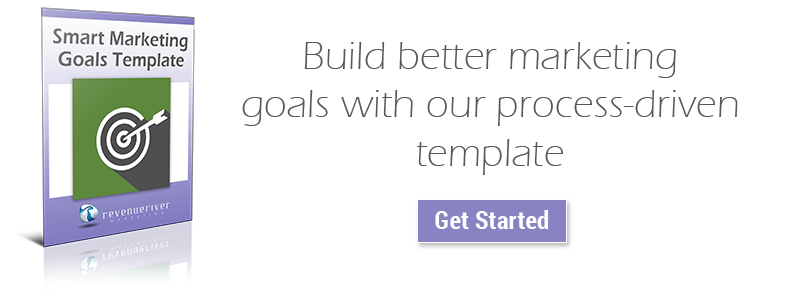

While a seemingly small detail in the grand scheme of things, segmentation has the ability to derail your entire inbound marketing strategy when not done properly or not done at all. This little step can lay the foundation for a solid marketing plan, dictate the way your content is perceived, the quality of your database, and more.
While it may require a little more due diligence, the payoff will be worth it.
1) Segmentation Gets Your Content in the Right Hands
What’s the point of slaving away on your content marketing efforts if the messages within your content don’t apply to the people receiving it and viewing it? There is no point, but sadly, it happens more often than not, unless of course you’ve taken us up on our advice and segmented with a purpose in mind. By thoughtfully segmenting your database, you can tailor the message of your emails based on what you know the subgroups of your contacts want to hear about. For instance, if John Smith fills out a form and denotes that he is interested in Product X, but is not interested in Product Y, start sending him emails about Product X and STOP sending him emails about Product Y.
2) Segmentation Leads to Effective Automation
While HubSpot’s automation features go above and beyond, your automation strategy still requires a certain level of thought and forward thinking. Therefore, stop automating just to automate, and start doing so with a purpose. This purpose should begin with segmentation. When you intertwine segmentation into your automation strategy, your automation results will improve significantly. Rather than sending broad, generalized content via automation to your contacts, start sending targeted messages to a targeted group. For instance, people who are not in a decision-making role should not be sent emails that are geared towards people who can make purchase decisions for their company. In another example, the people who do not open an email with top-of-the-funnel messaging and content, should not receive the next email in that series, which offers middle-of-the-funnel content.
3) Segmentation Allows You to Gauge Your Database
What’s the point of having thousands of leads in your database if you know nothing about them and don’t know how to connect with them? Without segmentation, you have no insight into who makes up your database and what your contacts are looking for.
By properly segmenting, you will be able to determine the type of people who have shown interest in your specific services or offerings, the issues or questions contacts are running into, and demographic information. With this information and data being known, you will be able to determine what you need to be doing from an inbound marketing perspective, as well as the traits and interests of your audience. For instance, if you discover, by means of your segmentation strategy, that a large portion of your database is made up of women in their mid-forties, stop sending that portion of your database information about products geared towards men.
4) Segmentation Keeps Your Database Clean
In addition to creating segments that are relevant to your business and are important to nurture, also keep track of and segment the irrelevant leads that you don’t see a future with. As backwards as it may sound, you need to put unqualified contacts into a bucket so they do not get mixed in with the good leads. By doing so, you are ensuring you are not wasting your time or resources on these leads. For example, if your service area is strictly within the United States and you have no future plans to expand outside of the United States, but a number of contacts within your database reside in different countries, you don’t want to waste your time on these contacts. Instead, keep track of who these contacts are.
The only thing that these contacts are doing is getting you one step closer to tipping your HubSpot contact limit. Therefore, create a HubSpot smart list with criteria that add people based on the contact property “Country” not equaling the United States. Also, be sure to keep track of and monitor the contacts in your database who have unsubscribed from your emails and the contacts who do not engage with your emails. Keep your database relevant and clean by setting a reminder to go through and delete these contacts every few weeks.
5) Segmentation Reveals Areas for Improvement
In addition to gauging your database, segmentation can take your strategy to the next level by setting the foundation for organization-wide improvements. Adding this step to your marketing plan can allow you to see who truly makes up your database. Demographic information, interests, and other traits across your database can be useful even beyond the marketing department. Your branding, messaging, and offerings can be modified to better suit the majority of leads in your CRM. Additionally, finding new ways to segment can identify a new audience or a new opportunity for marketing activity.
How do You Segment A Database?
If you've gotten this far, but don't know how to begin segmenting, let’s backtrack and get to the ‘how.’ How do you even go about segmenting your database?
To begin, think back to your marketing goals. Who constitutes your target market? Thinking in terms of the personas that make up your target market is a good place to start. Taking it a step further, how can you identify and group individuals into those personas? Once you have identified a way to bucket contacts into HubSpot’s persona smart lists, think collecting information like job title on a web form, then you can work towards further segmenting your database. In what other ways would you like to identify and group the hundreds or thousands of individuals that make up your database? What information would be helpful for sales to know when you hand over a lead? What information would make someone a qualified lead? And what type of information or criteria would disqualify someone in the sales process?
Create contact properties that will serve to answer whether someone is the right fit for your business and worthy of your marketing efforts, input these properties on your website forms as form fields, and create smart lists that will identify segments by means of how people answer the questions on your forms. Ultimately, you will have organized groups of people that will allow you to target the right people with the right material, which brings us to our next point.
Final Thoughts
As can be noted from the several benefits of segmentation, this is not a step that should be overlooked. After knowing how to segment, the ways to segment and the benefits of segmentation are endless. The perks discussed here are just scratching the surface for what could be revealed by means of segmenting. Always start with the end in mind. What are your marketing goals and how can we segment in a way that will ultimately support these goals?
Need help with your marketing goals? Check out our guide below.

